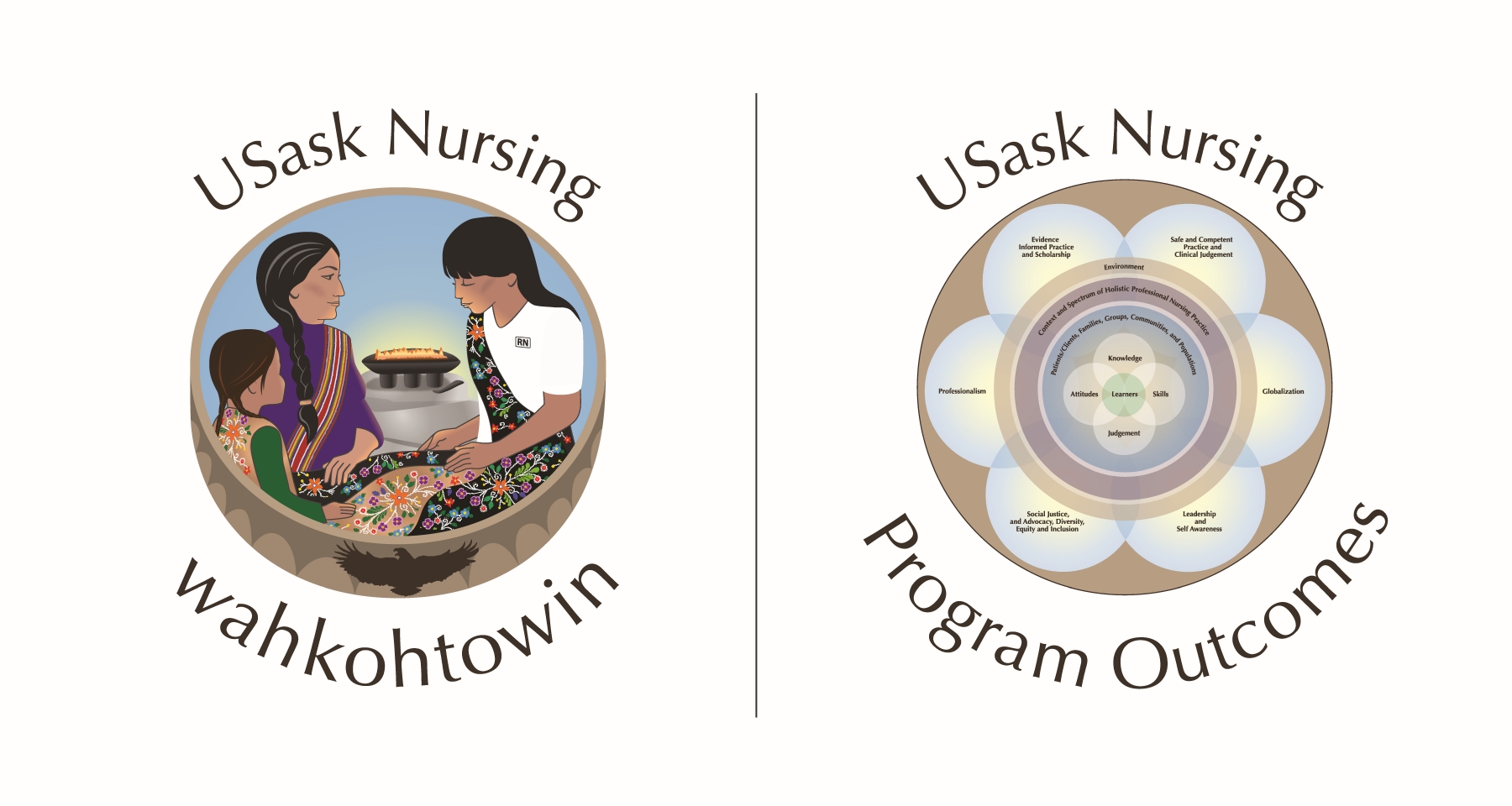Bachelor of Science in Nursing
Curriculum Model
The University of Saskatchewan nursing graduate will be competent in the program outcomes illustrated in Usask Nursing Curriculum model, and will be introduced to First Nations, Metis, and Inuit worldviews through the wahkohtowin model.
Wahkohtowin, a Cree Worldview, describes how we are all related and interconnected, and how the energy in the relationships can create transformation. The wahkohtowin symbol, gifted to the College of Nursing, is rich with images that capture cultural concepts representing First Nation, Metis, and Inuit people.
The Inuit peoples are represented by the Qulliq, Metis peoples are represented by the sash and beadwork, and First Nations peoples are also represented by the beadwork, and the drum. Overarching cultural images include: family, Father Sky, circle of life and Mother Earth’s heartbeat, fire, rocks, and the Eagle, which as one of the Seven Sacred Teachings, represents love.
The Seven Sacred Teachings are values that when embodied will promote harmony and a good life.
The Cree worldview of wahkohtowin was intentionally chosen by the College of Nursing. According to the 2021 census, there are approximately 130,000 people (12% of the population) in Saskatchewan who belong to one of the 70 First Nations. The most common First Nation linguistic groups spoken in Saskatchewan are Cree (an Algonquin language), Dakota, Dene, Nakota (Assiniboine), and Saulteaux. Additionally, Saskatchewan has a prominent Metis population (5%), making Michif another significant regional language. Of these languages, Cree is most prevalent, with over 24,600 speakers in Saskatchewan.
The Usask Nursing curriculum model illustrates four layers of the nursing experience represented as circular rings. The inner ring represents the individual learner. The learner will be provided with a holistic learning experience including the physical, emotional, mental, and spiritual realms. Learners will practice skills with respect, kindness and vision, they will exude honesty in their attitudes, demonstrate clinical judgement with a sense of responsibility, and value intuition, reflection, humility, wisdom, self-awareness, and experience in acquiring new knowledge.
The second ring represents the recipients of care, such as individual patients/clients, groups, families, communities, or entire populations. The third ring represents the context of holistic nursing practice, and the fourth and outer ring represents the societal environments where nursing practice occurs.
The six program outcomes represented in the outer circles of the Usask Nursing curriculum model are:
- Leadership and Self Awareness
- Social Justice and Advocacy, Diversity, Equity and Inclusion
- Evidence Informed Practice and Scholarship
- Globalization
- Professionalism
- Safe and Competent Practice and Clinical Judgement
The seventh program outcome introduces students to the worldview of wahkohtowin and encourages students to apply these teachings to their practice.
The College of Nursing acknowledges that Western and traditional worldviews may contradict each other. The intent of the college is to challenge learners to consider multiple worldviews simultaneously, and to seek harmony and wellness through good relations with each other and those we serve.


